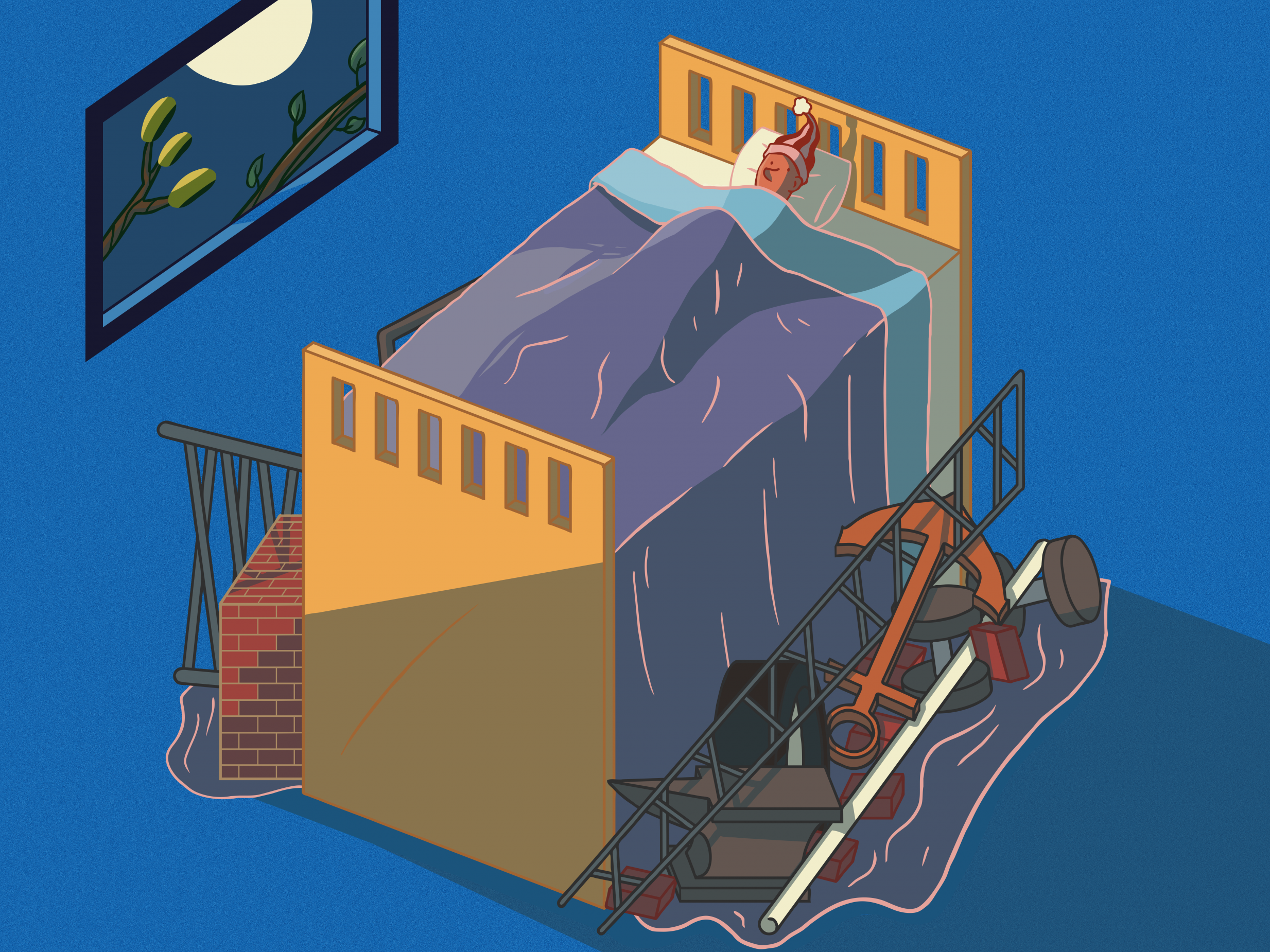Need a hug but don’t have a human to hand? Try a weighted blanket
Insomnia is a curse for which there seems to be no cure – as Christine Manby well knows. But perhaps a really heavy blanket will help?


It’s that time of year when all sensible Northern hemisphere mammals are hibernating. I don’t know about you, but I have a strong urge to do the same. I’m ready for it, having put on a considerable layer of fat that will keep me going through several winters over the Christmas holidays. Which of us didn’t angry-eat a whole box of mini mince-pies on the morning of December 27th? Oh, really? It was just me then.
Anyway, I’ve done the laying on of supplies thing. How about the ability to stay asleep for weeks on end? Or even for a whole night in one go? The holidays were, for me, a period of three am awakenings. Not the usual party season type, caused by a bladder full of wine, but the type in which you jolt awake from a bad dream and stay awake because Brexit, your career crisis and those niggling mid-life health worries are a waking nightmare that won’t end with you stepping out of the shower to the grateful surprise of a spouse who thought you died several months ago (google “Bobby Ewing taking a shower”, young people).
I tried not drinking alcohol. I tried not eating late. I tried turning off my phone an hour before bedtime (OK, 10 minutes before bedtime) but nothing seemed to make a difference. Falling asleep was never the problem. I needed something to keep me held down in the world of dreams for at least six hours. Perhaps I needed something that would literally keep me held down?
I first read about weighted blankets in an online adoption forum, where my fellow adoptees were discussing the benefits of such blankets with regard to anxiety and insomnia. Those people who had tried the blankets reviewed their experiences positively. “I got my first full night’s sleep in months,” was a typical claim. Some of the adoptees on the forum attributed the blankets’ calming effects to recreating a sense of being safely held that they didn’t get as infants, passed as they were from carer to carer while waiting to be placed with adoptive families. “It’s like being swaddled,” one wrote. “I feel as though I am healing at last.”
Thanks to a blanket? I looked the things up and found what appeared to be hefty counterpane type things. They were generally made from ugly dark fabrics (possibly because they aren’t usually washable). They didn’t look especially magical to me. But it seems they are.
Hugs and warm embraces have been shown to increase levels of feel-good chemical oxytocin, which leads in turn to feelings of relaxation and happiness
The invention of the weighted blanket has been attributed to autism researcher Dr Mary Temple Grandin. Grandin, who is herself on the autism spectrum, has famously used the insights she gained from her personal life experiences in her work as an animal behaviour consultant to the livestock industry. One of the things she noticed was that cows held in a compression chute to allow them to be easily vaccinated quickly became noticeably calmer when they were lightly squeezed. Grandin connected this to her own experience as a child, remembering how being held tightly had sometimes helped to ease her anxiety.
Hugs and warm embraces have been shown to increase levels of feel-good chemical oxytocin, which leads in turn to feelings of relaxation and happiness. However, particularly for people on the autistic spectrum, physical contact with another human being is not always straightforwardly pleasurable and can induce anxiety. Understanding this only too well, Grandin took the concept of the compression device used for livestock and adapted it for human use, creating a “hug machine” which could deliver the benefits of being held without the complicated panicky feelings that sometimes come with being held by another person.
Grandin’s original machine consists of two padded boards, which are hinged at the bottom to form a V shape. The user lies down in the bottom of the V and, by using a lever, operates an air cylinder which gently brings the boards together. The user can choose the intensity and duration of the resulting squeeze.
Hug machines have been shown to be very effective at reducing anxiety and tension in people with sensory processing disorders. Pressure therapy has also been reported as helping to reduce the symptoms of a number of health issues including fibromyalgia and insomnia. But hug machines are big and they’re not inexpensive. A home version of Grandin’s original machine would cost you in the region of £3.5k.
Fortunately, a weighted blanket provides a more easily accessible way to get some of the same benefits – a tension-relieving feeling of gentle pressure without unwanted human contact. It’s physical therapy you can do at home and it does seem to work. A 2015 study by occupational therapy specialist Tina Champagne et al of 30 adults who used weighted blankets during inpatient mental health hospitalisation showed that 60 per cent felt a significant reduction in anxiety, on a self-rating scale.
The weight of the blanket should be around 10 per cent of your weight. John Lewis has a blanket in the mid-price range in a variety of different degrees of heaviness that should cover a wide range of child to adult body sizes. It’s then as simple as sticking it in a duvet cover (if you don’t want to be dry-cleaning it all the time), putting it on your bed and getting in. The blanket has an advantage over the hug machine in that it doesn’t look like an instrument of medieval torture and you can easily move it around to cover exactly as much or as little of your body as you like.
Join our commenting forum
Join thought-provoking conversations, follow other Independent readers and see their replies
Comments